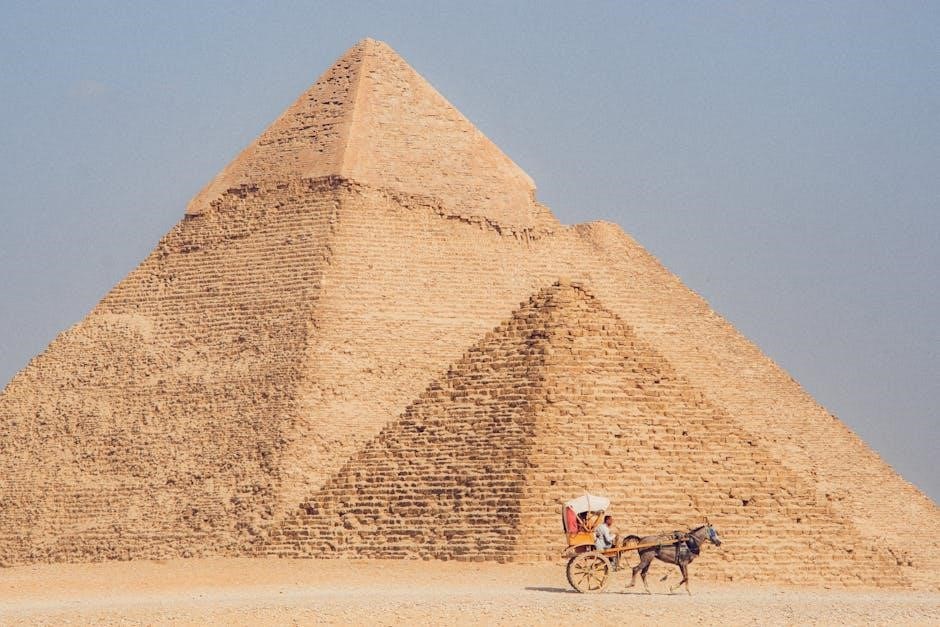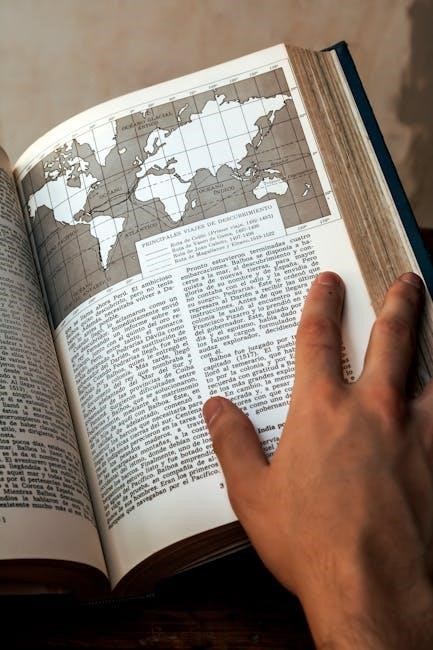Overview of the Unit
The AP World History Unit 1 study guide provides a comprehensive overview of the course material, covering the period from 1200 to 1450. This unit sets the foundation for the rest of the course, introducing key concepts and terms that will be built upon in subsequent units. The study guide is designed to help students navigate the complex and diverse world of AP World History, with a focus on major civilizations, trade networks, and cultural exchange. By understanding the key events, themes, and concepts of this period, students will be well-prepared to tackle the challenges of the course and succeed on the exam. The unit overview provides a roadmap for students to follow, highlighting the most important topics and concepts to focus on. With a clear understanding of the unit’s objectives and requirements, students can develop a effective study plan and achieve their goals.

Key Concepts and Terms
Key concepts and terms are essential for understanding the course material and include important definitions and explanations of historical events and cultural movements online now.
Frequently Tested AP World History Terms and Concepts
Frequently tested AP World History terms and concepts are crucial for exam success, with over 50 key terms and concepts to study, including definitions and explanations of historical events and cultural movements.
These terms and concepts are essential for understanding the course material and include important information about major civilizations, trade networks, and cultural exchanges that shaped global dynamics.
Students can use online resources, such as Quizlet, to study and memorize flashcards containing key terms, and review guides to help reinforce their understanding of the material and prepare for the exam effectively.
By focusing on frequently tested terms and concepts, students can develop a deeper understanding of the course material and improve their chances of success on the AP World History exam, which is a critical component of the course.

Period 1 Notes
Period 1 notes cover Paleolithic period, Neolithic period, and early human societies with key terms and concepts online now for study and review purposes effectively always.
Key APWHM Takeaways and Definitions
Key APWHM takeaways and definitions are crucial for understanding the course material, including the Paleolithic period, Neolithic period, and early human societies.
These definitions help students to identify and explain the major developments and events in AP World History.
Students can use online resources, such as Quizlet, to memorize flashcards containing key terms and concepts, including hunting and gathering societies, and the establishment of trade networks.
Additionally, understanding the definitions of key terms, such as Confucianism, Neo-Confucianism, and Theravada Buddhism, is essential for success in the exam.
By mastering these takeaways and definitions, students can develop a deeper understanding of the course material and improve their performance on the exam.
Overall, key APWHM takeaways and definitions provide a solid foundation for studying AP World History and achieving academic success.

Major Civilizations
The Islamic world, China, and the Mongol Empire were major civilizations that shaped global dynamics effectively online now with many resources available for study purposes always.
The Islamic World, China, and the Mongol Empire
The Islamic world played a significant role in shaping global dynamics during this period, with the spread of Islam and the establishment of trade networks and commerce. China, under the Song Dynasty, experienced a period of economic and cultural growth, with the development of Confucianism and Neo-Confucianism. The Mongol Empire, founded by Genghis Khan, expanded rapidly and established a vast empire that facilitated trade and cultural exchange between different civilizations. These major civilizations interacted and influenced each other, shaping the course of world history. The study of these civilizations is crucial for understanding the complexities of world history and the ways in which different societies have developed and interacted over time. By examining the Islamic world, China, and the Mongol Empire, students can gain a deeper understanding of the global tapestry and its significance in shaping modern society.

Review and Study Resources
Utilize online resources like Quizlet and review guides to aid in studying and reviewing the material effectively now online every day.
Quizlet and Review Guides
Quizlet is a valuable resource for studying AP World History Unit 1, offering flashcards and games to help memorize key terms and concepts. Review guides, such as the Heimler Review Guide, provide comprehensive overviews of the material, including key dates, events, and cultural movements. These resources can be used to supplement classroom instruction and textbook readings, helping students to better understand and retain the information. By utilizing Quizlet and review guides, students can develop a deeper understanding of the subject matter and improve their performance on exams and assessments. Additionally, these resources can help students to identify areas where they need extra support, allowing them to focus their studying and review efforts more effectively. Overall, Quizlet and review guides are essential tools for success in AP World History Unit 1. They provide a structured approach to learning and review.